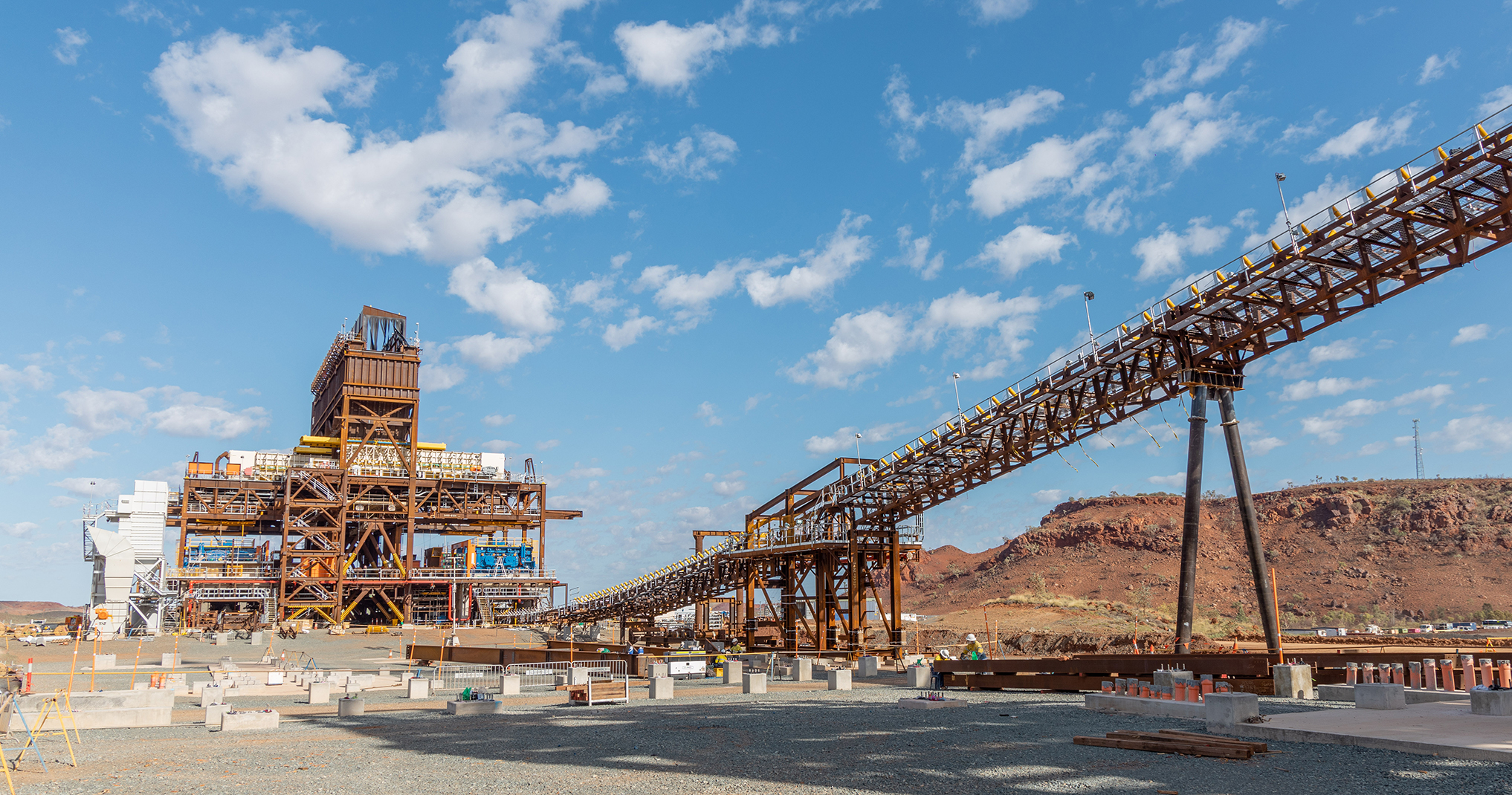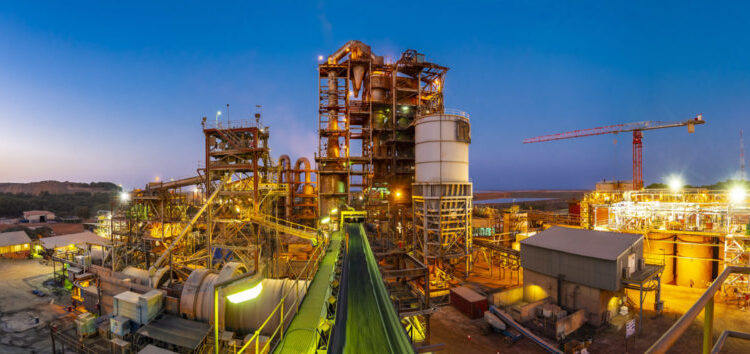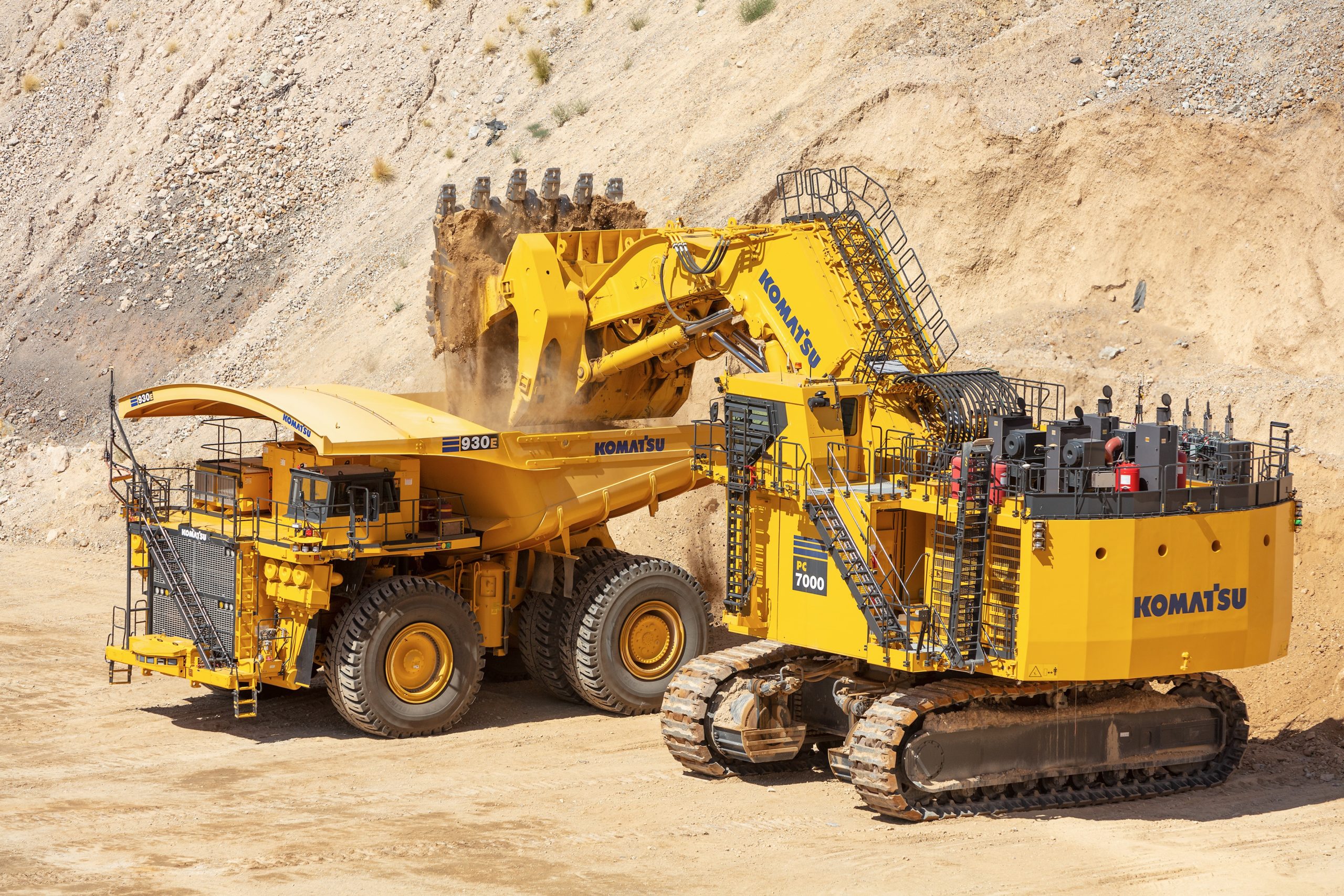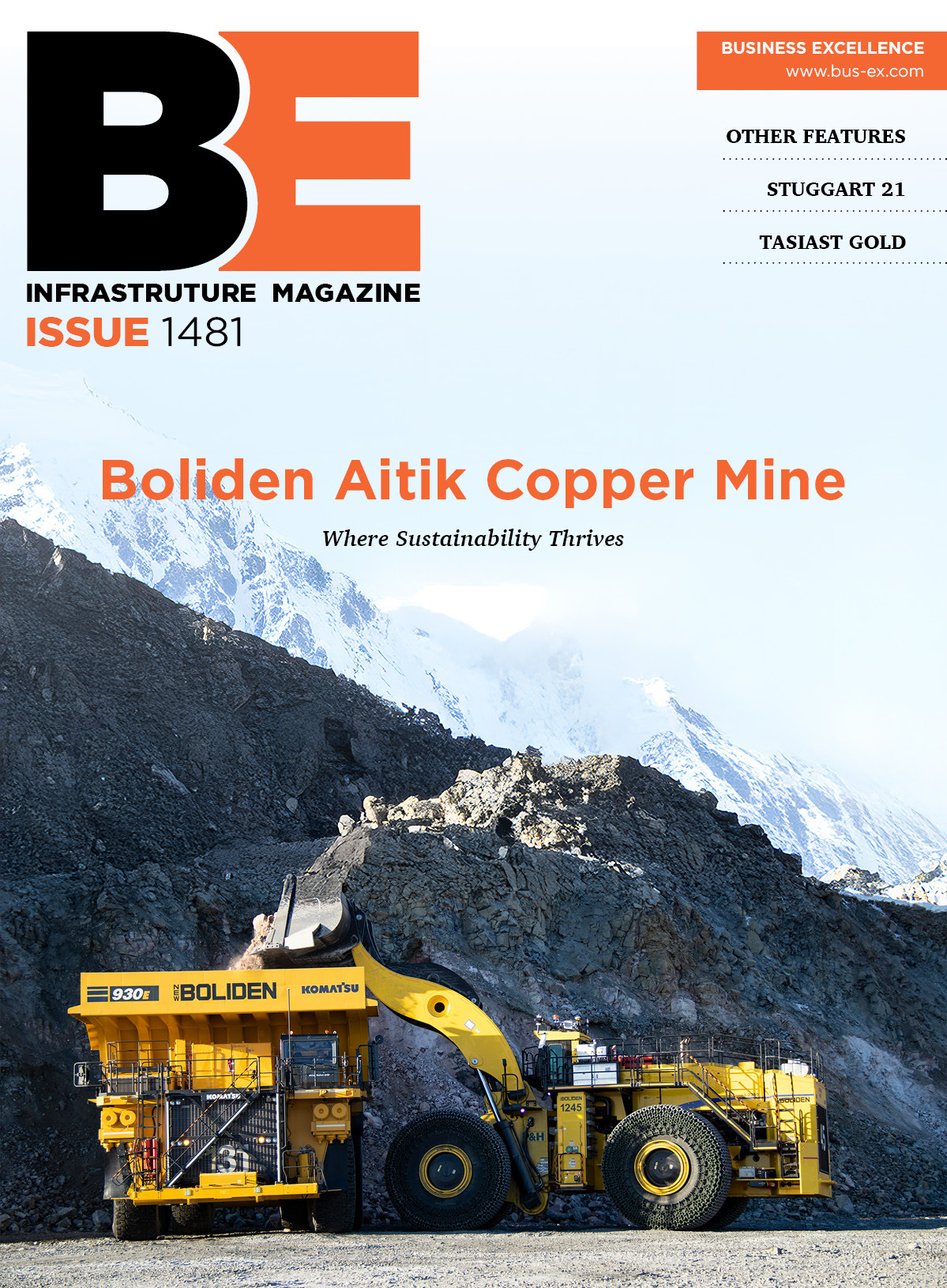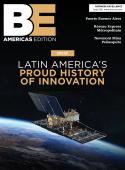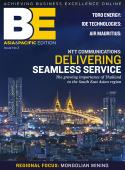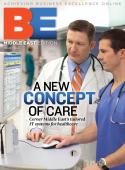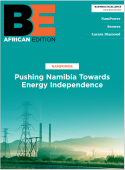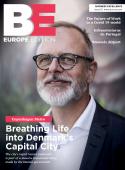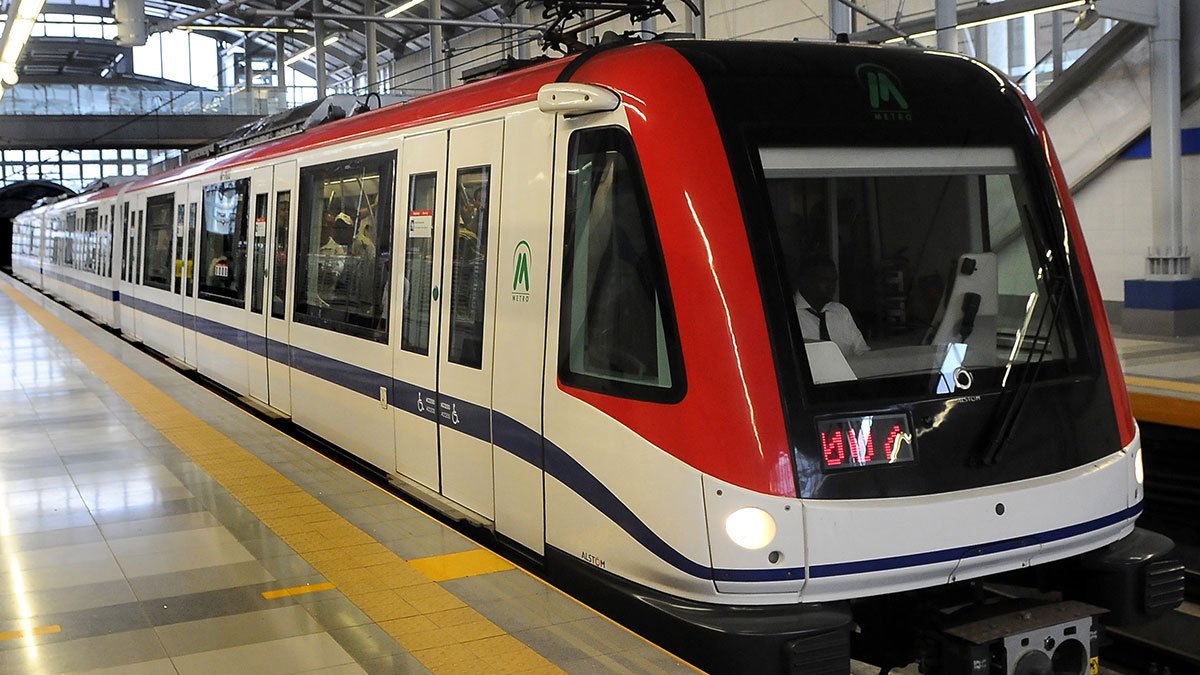
Santo Domingo’s metro system has emerged over the past five years as a cornerstone of urban modernization and economic growth in the Dominican Republic. As the largest and most advanced mass transit network in the Caribbean and Central America, Metro Santo Domingo is not just a public transportation project – it’s a nation-building endeavor. For C-level executives in infrastructure, it offers a compelling case study of how visionary investment in urban transit can unlock wide-ranging socioeconomic benefits. From easing chronic traffic gridlock to spurring real estate booms and cutting carbon emissions, the metro’s impact reverberates across the capital region’s economy and society. In this editorial feature, we explore how Metro Santo Domingo has transformed urban life and what the future holds as expansion plans move forward.
Largest Metro in the Region: A Flagship Project
Metro Santo Domingo is a flagship infrastructure project that showcases the Dominican Republic’s ambition. With two lines, 34 stations, and a total route length of roughly 48.5 kilometers, it stands as the most extensive urban rail network in the insular Caribbean and Central America. This scale outstrips comparable systems in the region – Santo Domingo’s metro is longer and serves more stations than any other metro in the Caribbean basin or Central America. What began with the inauguration of Line 1 in 2009 has, in the last five years, grown into a comprehensive network spanning the city’s north-south and east-west axes. The metro is widely regarded as a symbol of national pride and modernity: a tangible indicator that the Dominican Republic is investing in world-class infrastructure.
Beyond its sheer size, Metro Santo Domingo represents a milestone in public transport innovation for the region. It introduced a level of service and efficiency previously unseen in Caribbean mass transit. Trains glide along underground and elevated tracks through the capital, bypassing chaotic street traffic. The system’s design – from stations to rolling stock – adheres to international standards, reflecting partnerships with experienced global industry players. For example, the sleek Alstom Metropolis trainsets, manufactured in Spain, provide air-conditioned comfort and high reliability. This blend of global expertise and local political will has yielded a metro system that rivals those in much larger metropolitan areas. In short, Metro Santo Domingo has become a showcase project, proving that a small island nation can execute a complex transit system on par with the world’s best.
Easing Traffic and Modernizing Urban Mobility
One of the metro’s most immediate and visible impacts has been on urban mobility and road congestion. Santo Domingo, like many growing cities, long struggled with snarled traffic and overburdened roadways. Major thoroughfares such as the Duarte Highway, 27 de Febrero Avenue, and Máximo Gómez Avenue were once notorious for rush-hour gridlock. The introduction and expansion of the metro provided a crucial pressure valve. Each weekday, between 300,000 and 370,000 passengers ride the Metro Santo Domingo instead of clogging the roads with cars or jam-packed minibuses. By shifting hundreds of thousands of commutes from road to rail, the metro has dramatically reduced surface traffic along its corridors.
Key city arteries have seen noticeable relief thanks to the metro lines running beneath or above them. For example, Line 1’s north-south route connects Villa Mella in the northern suburbs to the Centro de los Héroes in the south, a journey that once required multiple “carro público” rides or a very long drive through heavy traffic. Now it’s a single, swift trip end-to-end. Similarly, Line 2’s trajectory from the western outskirts (at Km 9 of Duarte Highway) through the city center to Santo Domingo East has pulled a significant volume of commuters off one of the busiest road corridors. Commuters who once spent well over an hour in stop-and-go traffic can traverse the same distance by metro in a fraction of the time, with typical cross-city journeys taking mere minutes between stations. This reliability is especially evident during peak hours: while cars and buses crawl through intersection bottlenecks, metro trains maintain a consistent schedule, arriving every few minutes regardless of rain or rush hour chaos.
The modernization of urban mobility goes beyond alleviating traffic jams; it is fundamentally changing how people navigate the city. The metro has set a new standard for public transit in a place historically dominated by informal transit (like guaguas and motoconchos). Passengers have embraced the metro’s safety, punctuality, and comfort. In surveys, riders frequently cite not only the time savings but also the reduced stress of commuting. The once-ubiquitous uncertainties of travel – “Will I find a ride? How long will it take today?” – have been replaced by the predictability of a timetable. This cultural shift toward rail travel underscores a broader transformation: Santo Domingo is moving away from an inefficient, road-centric model of mobility and into a more sustainable, organized era of public transportation.
Socioeconomic Lifeline for Commuters
Beyond moving people around faster, Metro Santo Domingo has become a socioeconomic lifeline for many residents, especially over the last five years as the network and ridership expanded. Studies and user testimonials highlight profound daily benefits. One key advantage is time savings: the average metro user saves anywhere from 45 minutes to over an hour per trip, which can amount to more than 1.5 hours saved on a round-trip commute. This recaptured time is invaluable – parents get home sooner to be with their families, students have extra time to study or work on assignments, and workers can pursue education or second jobs instead of being stuck in traffic. In aggregate, the productivity gains for the city are significant. By one estimate, the annual time saved by metro passengers translates into millions of dollars of economic value, as people put formerly lost hours to more productive use.
There are also direct financial savings for commuters. Public transport in Santo Domingo has historically been fragmented and costly, with people often paying multiple fares to transfer between conchos, buses, or motorcycles. The metro’s single-fare system (with integrated transfers) slashes this burden. On average, a regular metro rider might save around RD$20–25 (Dominican pesos) per day on transit fares compared to previous options – a modest-sounding amount that adds up to significant relief for low-income households over a month or year. For many working-class Dominicans, those savings can go toward extra groceries or school supplies, illustrating how better transit directly improves household economics.
Perhaps most importantly, the metro has improved access to opportunities for marginalized neighborhoods. The alignment of Line 1 and Line 2 was purposefully chosen to serve districts that were historically underserved by reliable transport. For instance, the northern terminus at Villa Mella and the forthcoming western terminus at Los Alcarrizos are areas of high population density with many low-income communities. By connecting these districts with the city center, the metro is effectively shrinking the distance between where people live and where jobs and services are located. Residents of these outlying neighborhoods can now feasibly seek employment in central business districts or attend universities and training centers that were previously too time-consuming to reach daily. Employers, in turn, report better employee punctuality and retention as commuting becomes less of a barrier – a worker from Villa Mella is no longer at high risk of losing their job due to chronic lateness caused by unreliable transportation. All of these factors contribute to social inclusion: the metro is knitting together disparate parts of the metro area, giving tens of thousands of people improved mobility and a fairer shot at economic advancement.
Catalyzing Economic Growth and Job Creation
Major infrastructure projects are often judged by their economic ripple effects, and Metro Santo Domingo has delivered robustly on this front. From its initial construction phase to ongoing operations and maintenance, the metro has been a powerful engine of job creation and economic stimulation. During the construction of the lines and extensions, thousands of jobs were generated – ranging from civil engineers and project managers to construction laborers, electricians, and machinery operators. For example, the recent Line 2 extension to Los Alcarrizos (known as Line 2C) alone mobilized over 2,000 workers on-site at its peak, injecting livelihoods into the local economy. Cumulatively, since the metro project’s inception, it’s safe to say tens of thousands of direct and indirect jobs have been created. These include not just short-term construction roles but also permanent positions in the metro’s operation: train drivers, station staff, maintenance crews, security personnel, and administrative roles within OPRET (the government office that runs the metro). Every paycheck from these jobs circulates back into the economy, supporting families and local businesses.
The construction of the metro also activated extensive supply chains inside the Dominican Republic. Large infrastructure works require vast quantities of materials – steel rails, cement, gravel, electrical systems, finishings, and more. Local suppliers and manufacturers have benefited by providing many of these inputs. Dominican cement companies, steel fabricators, quarry operators, and logistics firms all found demand in the metro build-out, especially in the last five years as expansions kicked into gear. This has a multiplier effect: when a local cement factory increases production to meet metro construction needs, it might hire more workers, purchase more raw materials, and even invest in new equipment, thereby spreading the economic stimulus further. Additionally, numerous local contractors and subcontractors were engaged for various works, from excavation to station fit-outs. By one count, over 100 Dominican companies have participated in metro-related contracts, large and small. This not only keeps a substantial portion of project spending recirculating within the country, it also transfers valuable technical knowledge to local firms and engineers.
International partnerships tied to the metro have likewise spurred economic benefits. The project attracted foreign direct investment and financing – for instance, development banks and foreign governments (like France’s AFD and the Central American Bank for Economic Integration) have provided loans and grants for expansions and upgrades. Such inflows improve the country’s infrastructure financing capacity and often come with training or technology exchange programs. Furthermore, as an operational metro requires continual supply of parts, services, and upgrades, long-term vendor relationships have formed. Global companies have set up local offices or collaborations to service the metro (providing everything from signaling systems to escalator maintenance), further embedding the project’s economic footprint in the city. All these elements – jobs, supply chain activation, investment – underscore how the metro has acted as a stimulus program, boosting GDP and demonstrating the economic viability of large-scale infrastructure in the Dominican Republic.
A Greener Commute with Environmental Benefits
In an era where sustainable development is paramount, Metro Santo Domingo provides a clear environmental win for the capital city. The shift of commuters from cars and informal buses to an electrified rail system yields a significant reduction in vehicle emissions. Estimates suggest the metro prevents the release of roughly 70 tons of CO₂ every day by replacing countless individual car and old bus trips with energy-efficient train rides. Over the course of a year, this amounts to tens of thousands of tons of greenhouse gases kept out of the atmosphere – a meaningful contribution for a small country and a step toward national climate goals. The government has even set targets to cut transportation-related emissions by 50%, and the metro (along with other public transit initiatives) is central to that strategy. Each full metro train represents hundreds of cars taken off the road, which not only reduces carbon output but also curbs other pollutants like particulate matter, carbon monoxide, and nitrogen oxides that contribute to urban smog.
The environmental benefits extend beyond air quality. Less traffic on the roads means lower noise pollution in the city – an often-overlooked quality-of-life factor. Residents and businesses along the metro corridors enjoy a quieter environment with fewer honking horns and roaring engines at rush hour. Additionally, the metro’s electrical power can be made cleaner over time as the Dominican Republic’s energy grid incorporates more renewable sources. In contrast, a fleet of combustion-engine vehicles can’t easily become more efficient without wholesale replacement. By investing in electric mass transit, the city is future-proofing its transportation footprint; as the grid gets greener (for instance, through natural gas, wind, or solar projects coming online), the effective emissions per metro ride will drop even further.
It’s also worth noting the metro’s role in promoting more efficient land use and a greener urban form. Because it can move large numbers of people in a small footprint, the metro discourages the urban sprawl and endless road-building that come with car-dependent growth. Stations serve as nodes where development can be concentrated vertically (around transit hubs) instead of horizontally (consuming new land for highways and parking). This pattern helps preserve green spaces and reduce the city’s overall carbon footprint. Furthermore, Metro Santo Domingo’s success has paved the way for complementary initiatives like aerial cable cars and bus rapid transit (BRT) lines, which feed into the metro network. These modes also reduce reliance on fossil-fuel vehicles in their own ways – the cable cars run on electricity and the BRT uses higher-capacity buses to replace many smaller ones. In sum, the metro is a cornerstone of Santo Domingo’s journey toward a more sustainable, low-emission urban transport system, making the capital not only more livable but also more resilient in the face of environmental challenges.
Revitalizing Urban Landscapes and Property Values
Mass transit investments often bring the added benefit of urban revitalization, and Santo Domingo is experiencing this effect around its metro stations. Areas that were once overlooked or underdeveloped are gaining newfound prominence and commercial activity thanks to their connectivity. The presence of a metro station confers clear advantages – foot traffic increases, accessibility improves, and businesses see more customers. Over the last five years in particular, neighborhoods adjacent to metro stops have seen a spike in both private and public development projects. Retail outlets, banks, eateries, and informal vendors have flourished around station entrances, catering to the steady stream of riders each day. For example, the terminus station Centro de los Héroes has effectively become a bustling intermodal hub where government offices, shops, and food kiosks thrive on the daily ridership. Likewise, in residential areas served by the metro, one can observe new apartment buildings and housing projects highlighting “near the Metro” as a key selling point.
A notable outcome of the metro’s expansion has been the increase in property values and land desirability near stations. Real estate developers and homeowners alike recognize that proximity to a metro station can substantially boost the attractiveness of a property. Studies of similar systems worldwide consistently show jumps in land value once a new station opens – Santo Domingo is no exception. Local realtors have reported that in some neighborhoods the price per square meter for commercial and residential space rose by double-digit percentages post-metro. Even historically marginalized districts are seeing an uplift: for instance, the area around María Montez station (on Line 2) and the forthcoming Los Alcarrizos station (Line 2C extension) have drawn interest for new projects now that fast transit links are in place. Urban planners note that this kind of transit-oriented development can help rebalance city growth, encouraging investment in corridors that align with efficient transport instead of random sprawl.
The government has capitalized on this momentum by undertaking urban renewal projects in conjunction with the metro. Infrastructure upgrades like better lighting, sidewalks, parks, and road resurfacing often accompany the opening of a station, immediately improving the urban landscape. In some cases, previously blighted areas have been cleaned up and made safer as part of the metro construction’s right-of-way clearance and station area planning. This attracts further private investment. Consider the example of Villa Mella at the end of Line 1: once considered a distant suburb, it is now much more integrated into the metro area economy, and there are plans for civic improvements around its stations. While rising real estate values can pose affordability challenges, on balance the uplift signals positive growth – higher demand for housing and commercial space near transit reflects a healthier, more connected city. City authorities are looking at ways to manage this growth so that it benefits existing communities, for instance by updating zoning around stations to allow mixed-use development and by investing in affordable housing near transit lines.
Modern, Accessible, and Rider-Friendly
Metro Santo Domingo was designed with a focus on passenger experience and accessibility, ensuring that the system not only moves people efficiently but also enhances their quality of life. The stations and trains feature modern amenities that were largely new to public transit in the Dominican context. All trains are equipped with air conditioning, a must in the tropical climate, so riders can travel in comfort regardless of the heat or humidity outside. The cars and platforms are kept remarkably clean and well-lit, contributing to a sense of safety and welcoming atmosphere for users. For security and information, the metro relies on technology such as CCTV cameras, real-time passenger information displays, and an automated signaling system that keeps everything running smoothly. These elements give riders the confidence that the metro is a reliable and secure way to travel across the city.
Accessibility has been a key principle. Unlike the old public buses that were often inaccessible to those with mobility impairments, the metro’s stations include elevators, escalators, and ramps, allowing elderly and disabled passengers to use the system with relative ease. Trains have wide doors and level boarding, accommodating wheelchairs and strollers. OPRET has periodically rolled out upgrades to further improve rider experience – for example, implementing an integrated fare card system called “SIT” (Sistema Integrado de Transporte) which enables people to use one reloadable smart card across the metro, cable cars, and even city buses. More recently, authorities have introduced digital payment options and mobile apps for trip planning, aligning with global trends in user-friendly transit tech. The result is a transit experience that, for many Dominicans, feels as modern as any in North America or Europe.
Frequency and punctuality are also hallmarks of Metro Santo Domingo’s service. During peak periods, trains on the busiest stretches run every 3 to 4 minutes, mitigating crowding and wait times. Even at off-peak times, headways are tight enough to make the metro a spontaneous mode of travel – riders know that even if they miss one train, another is just moments away. This reliability stands in stark contrast to other modes of transport, where one might wait uncertainly for a bus or be subject to erratic traffic delays. As a result, public perception of mass transit has improved markedly. Surveys indicate high satisfaction rates among metro users, who praise not just the speed but also the civility and order of the system (e.g., orderly queues, designated seating for pregnant women and seniors, etc.). The metro has arguably set new expectations for what public services in the Dominican Republic can deliver, raising the bar for quality and professionalism.
From a managerial perspective, these improvements also speak to the importance of continuous investment in maintenance and capacity. Recognizing burgeoning demand, OPRET and the government acted to expand capacity by procuring new train cars and lengthening platforms. In the past few years, dozens of additional rail cars have arrived from Alstom’s factories to be formed into new trains or to extend existing trains. The goal is to increase each train’s length (from three-car sets to six-car sets on busy lines) to carry more passengers per trip, reducing congestion inside trains at rush hour. Each incremental upgrade – be it more trains, upgraded signaling for tighter scheduling, or improved station amenities – has kept the metro a step ahead of the city’s growth. This forward-looking approach ensures that Metro Santo Domingo remains a reliable backbone for daily commuters, maintaining a high level of service that continues to attract new riders.
Safer Streets and Fewer Accidents
By providing a safe, regulated alternative to the tangle of on-street transport, Metro Santo Domingo has also contributed to improving overall safety on the city’s streets. The Dominican Republic has historically faced challenges with road safety – the mix of dense traffic, thousands of motorcycles, and informal public transport vans led to high accident and injury rates. The metro helps mitigate this in a few ways. First, every person who opts for a metro ride instead of a motorcycle taxi (motoconcho) or a precariously overcrowded minibus is one less person exposed to road hazards. With hundreds of thousands using the metro daily, that’s a substantial number of would-be road users now traveling via a far safer mode. The trains have an excellent safety record; unlike cars or bikes, they are not at risk of collisions with other vehicles once in their guideway, and the system is engineered with numerous safety failsafes.
The metro’s influence also extends to reducing road accidents indirectly. Key corridors where the metro runs parallel have seen a drop in vehicular volumes, which can correlate with fewer crashes simply by virtue of less congestion and conflict. When Line 2’s extension to Los Alcarrizos opens, for example, it is expected to ease traffic on the Duarte Highway – a road that has been an accident hotspot. Fewer buses and cars jockeying for position on that highway should mean a calmer flow and fewer opportunities for collisions. Similarly, Line 1’s operation saw a noticeable reduction in the fleets of aging “carro público” taxis on Maximo Gómez Avenue, which improved road order and safety on that stretch.
Another dimension of safety is the personal security aspect. Before the metro, many working-class commuters had little choice but to travel at early dawn or late at night on dark, unsafe streets, or to hop between uncertain rides – situations ripe for street crime or harassment. Now, the metro offers a secure environment with surveillance and staffed stations, which is particularly beneficial for vulnerable populations like women, students, and the elderly traveling during off-peak hours. Stations are well-lit and monitored, and trains themselves are areas where social order is maintained (e.g., security guards often patrol the cars). This environment helps people feel safer commuting, which has positive social implications – for instance, more women may feel comfortable taking up jobs that require evening shifts if they know they can get home safely on the metro.
All told, while the metro’s primary mandate is transportation, its positive externalities on safety are a key part of its value proposition. It contributes to a virtuous cycle: safe transit encourages more ridership, which further reduces the number of potential accident victims on the road and fosters a culture of orderly commuting. For a city aiming to modernize, this cultural shift toward safer, more rule-bound transit options is an important step.
Integration, Expansion, and Future Plans
Metro Santo Domingo’s success to date is only the beginning – it is part of a broader Integrated National Transport Master Plan that envisions a web of coordinated transit solutions for the greater Santo Domingo area. Over the last five years, the government has aggressively pursued plans to expand and integrate the metro with other modes. A notable achievement was the integration of the Santo Domingo Teleférico (cable car) lines with the metro’s ticketing system. In 2018, the first cable car line opened, linking low-income barrios across the Ozama River to the metro network; a second cable car line serving Los Alcarrizos is under construction. These aerial gondolas act as feeder routes, gracefully ferrying passengers over geographical barriers and funneling them into metro stations. The unified fare and schedule coordination mean a commuter can seamlessly transfer from a hillside cable car to a metro train with minimal hassle. The combined metro-cable system is a novel solution in Latin America, one that other cities are watching closely as a model for socially inclusive transit.
On the ground, the integration extends to buses as well. The government (through the transport authority INTRANT) has been rolling out corridor-based bus rapid transit (BRT) lines and express bus services to supplement the metro. Several BRT or tram-style corridors are planned or in progress, designed to connect areas beyond the reach of current metro lines. For instance, dedicated bus lanes and modern buses are being introduced on key avenues to feed into major metro interchange stations. A unified route map and centralized control aim to eliminate the old chaos of redundant, competing bus lines. For riders, this means the metro ride is just one leg of a comprehensive journey that can be conveniently planned and paid for end-to-end. Already, digital apps and an integrated ticketing card allow travelers to move from bus to metro to cable car in one continuous trip. This level of integration is still rare in many developing cities and speaks to Santo Domingo’s commitment to a world-class, multimodal transit network.
Looking ahead, expansion projects are in full swing. The most immediate is the aforementioned Line 2 extension (Line 2C) westward to Los Alcarrizos, a 7.3 km expansion with five new stations, slated for completion by late 2024. This project, costing roughly $500 million, has been progressing rapidly and will connect a huge suburban population (Los Alcarrizos municipality) directly into the metro for the first time. Construction crews have already completed complex tasks like tunneling under the Duarte Highway to link the new segment with the existing Line 2 terminus at María Montez station. When Line 2C opens, ridership is expected to surge further, possibly pushing daily metro usage well beyond 400,000. In parallel, plans are being refined to extend Line 2 on its eastern end as well – from the current Concepción Bona station deeper into Santo Domingo Este, potentially reaching the municipality of San Luis. That extension would knit another growing suburban area into the network, closing the loop on Line 2’s originally intended span from west to east extremes of the metro area.
Perhaps the most ambitious project under review is the introduction of Metro Line 3, a brand new line that government officials have been actively planning and seeking financing for. Line 3 is envisioned to run diagonally across the metro area, connecting the western district of Los Bajos de Haina all the way to the east, terminating near the Las Américas International Airport. Early plans suggest this line could be around 20–23 kilometers long with over 20 stations, intersecting with Line 1 and Line 2 along the way to allow for transfers. The strategic significance of Line 3 cannot be overstated: it would directly link the capital’s intercity bus terminus in the west (and an industrial zone in Haina) with downtown, the government center, and then onward to the country’s busiest airport in the east. For travelers, this means a person could land at SDQ Airport and travel by train into the city center, or a worker from the city could take a quick metro ride to jobs around the airport zone. Travel times on this corridor, which today can exceed 90–120 minutes by car in traffic, would be slashed to perhaps 30 minutes by metro – a transformative change.
The Line 3 project, along with other future lines, forms part of a refreshed master plan that the current administration has been championing. President Luis Abinader’s government has actively courted international partners to realize these expansions. Notably, Japan has shown interest in supporting Line 3, with the Japanese development agency and companies proposing high-tech solutions (such as advanced smaller-footprint trains that require no major demolitions along the route). Meanwhile, European financiers have signaled support: France’s AFD has already extended credit lines to boost capacity on existing lines and is a potential backer for new segments. Additionally, the Dominican government is exploring public-private partnership (PPP) models to accelerate transit projects. One such example is the proposed “Tren Metropolitano” – a roughly 30 km rapid transit route (essentially part of the envisioned Line 3 alignment) targeting a PPP structure for the airport segment. A tender for this project was reportedly relaunched recently, aiming to attract private investment and expertise in building and operating the line under government oversight. If successful, it would be a pioneering transit PPP in the region and could open the door for more innovative financing approaches in Dominican infrastructure.
All these plans – extra lines, extensions, BRT feeders, cable cars – underscore a key point: Metro Santo Domingo is not an isolated endeavor but the backbone of a metropolitan mobility revolution. Executives following the region will note that the Dominican Republic is one of the few countries in the Caribbean taking such a holistic approach to transit planning. The coming five to ten years could see the Santo Domingo network double in size, dramatically expanding coverage. The government’s integrated vision ensures that each piece (whether a new metro line or a bus loop) complements the others to maximize connectivity. For stakeholders in the infrastructure sector, this presents opportunities for involvement at multiple levels, from civil construction contracts and rolling stock supply to technology systems and transit-oriented development projects around new stations. The momentum is firmly behind public transport in Santo Domingo, with strong political will and public support propelling these expansion plans forward.
Global Partnerships and Local Participation
A critical factor in Metro Santo Domingo’s story has been the synergy between international partnerships and local participation. The project from the outset leveraged global expertise: the Dominican government wisely brought in experienced international firms to ensure the metro met top standards. For example, Alstom, the French rolling stock giant, has been a cornerstone partner, supplying the Metropolis series trains that run on the network. These trains, built in Alstom’s Barcelona factory, are customized for Santo Domingo’s specifications and tropical climate. As new extensions come online, Alstom is under contract to deliver additional trainsets, including state-of-the-art traction and signaling technology that improves energy efficiency and headway management. Such partnerships guarantee that Santo Domingo benefits from the latest advancements in metro technology – the same tech propelling metros in Paris or Singapore is being deployed under the streets of the Dominican capital.
On the construction and systems side, firms like NGE and TSO (France) have played major roles in building and maintaining the metro’s physical infrastructure. TSO, for instance, handled track installation and has an ongoing maintenance contract, bringing precision in track geometry and upkeep practices honed on European railways. Their involvement has ensured that the rails of Metro Santo Domingo remain in excellent condition, enabling smooth rides and minimal downtime. Another example is the installation of control systems and electrification, where companies with specialized expertise were contracted to deliver robust solutions (including automatic train control and power supply systems). These international contractors often collaborate closely with Dominican counterparts, which has the benefit of transferring knowledge and training the local workforce in highly technical fields like signaling, tunneling, and project management.
Equally important is the extensive network of Dominican companies and talent woven into the fabric of the metro project. The civil engineering marvels – tunnels, viaducts, and stations – were largely built by local or locally-incorporated construction firms. For example, Ingeniería Estrella, a prominent Dominican construction company, has been a key contractor (notably on the new Line 2C tunnel segment). Their involvement showcases that local firms can execute complex engineering tasks when given the opportunity and guidance, fostering a sense of national ownership. Over time, local engineers, architects, and planners have grown in experience by working alongside international experts, better positioning Dominican companies for future projects at home or even abroad.
The procurement strategy has also favored local industry whenever feasible. Contracts for materials like concrete segments, steel rebars, station finishes, and miscellaneous supplies have often gone to Dominican vendors, provided they meet the quality requirements. This approach has kept a significant share of the investment circulating domestically. For instance, station construction required vast quantities of cement and aggregates – largely supplied by Dominican producers – and elements like pre-cast concrete parts or architectural detailing were sourced from local manufacturers. By involving over a hundred local suppliers and service providers, the project ensured that benefits were widely distributed in the economy and that there’s a broad constituency with a stake in the metro’s success.
For C-level executives, the Metro Santo Domingo case demonstrates the value of public-private and international-local collaboration in delivering large infrastructure. The Dominican government did not go it alone; it forged alliances with foreign governments, multilateral lenders, and private sector companies to marshal the necessary capital and expertise. Simultaneously, it cultivated domestic capabilities and kept the public interest at the core (fares are kept affordable and the system is government-operated to prioritize access over profit). This balanced approach has been instrumental in avoiding pitfalls that sometimes plague big projects – the metro was delivered without the massive cost overruns or delays that skeptics feared, and quality was upheld without alienating the local workforce or businesses.
Looking forward, maintaining these partnerships will be key. The upcoming expansions will likely see continued involvement of firms like Alstom (for trains and signaling), and perhaps new entrants drawn by PPP opportunities. There is also talk of engaging firms from countries like Japan (for Line 3) and others for their specialized knowledge. Dominican stakeholders are in a stronger negotiating position now, armed with proven local capacity and a track record of a functioning metro, which can help secure favorable terms and ensure any foreign involvement contributes to local growth (via training programs or local content requirements).
In conclusion, Metro Santo Domingo’s development has been a masterclass in combining strengths – international innovation with local dedication. It stands as a testament to what can be achieved when all parties row in the same direction: a modern metro system that not only elevates daily life for citizens but also opens avenues for economic and technological advancement in the country.
Conclusion: A Transformative Journey
In just a decade and a half – and especially in the last five years of accelerated growth – Metro Santo Domingo has reshaped the trajectory of the Dominican Republic’s capital. What was once a bold dream is now an everyday reality carrying hundreds of thousands reliably and safely. The metro’s story is about more than trains and tracks; it’s about transformative impact. It has cut commutes from hours to minutes, given working families a bit more breathing room in both time and budget, and proved that investing in high-quality infrastructure yields dividends across society. It has also signaled to the world that Santo Domingo is stepping onto the global stage of modern cities, embracing sustainable practices and integrating cutting-edge technology.
For infrastructure leaders and investors, the metro exemplifies how visionary public policy combined with strategic partnerships can create assets that are economically productive and socially inclusive. The system’s planned expansions and integration into a multimodal network point to a future where Santo Domingo is not only the first in its region to build a metro, but also among the first to leverage that metro into a comprehensive solution for urban mobility challenges. The socioeconomic ripple effects – reduced traffic, greener environment, uplifted communities, energized local industry – make a compelling case for continued support and replication.
As the Dominican government rolls out new projects, Metro Santo Domingo stands as proof of concept that bold infrastructure investment can pay off. It provides a template that could be emulated in other emerging cities seeking to break the cycle of congestion and inefficiency. Ultimately, the metro has become part of Santo Domingo’s identity – a point of pride and a daily reminder that progress is possible with planning, partnership, and perseverance. For the citizens who ride its cars and for the executives eyeing the region’s development, Metro Santo Domingo offers both a better ride today and a vision of a more connected, prosperous tomorrow.



